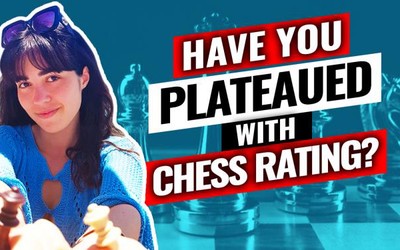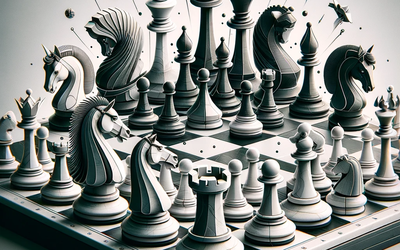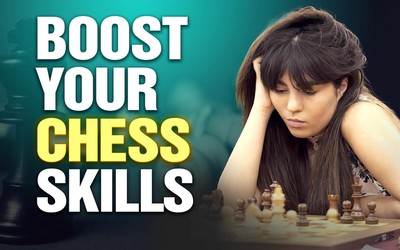
Study plan (based on rating)
When chess players start looking to learn more tactical material to get better in chess, it becomes more challenging for them to choose study plans according to their rating and experience. The middle game in chess is considered an important phase and to be difficult at the same time that can help you learn chess at a certain rating.In this article, you will learn about the most important aspects to learn Middle-game tactics at any level. This study will allow you to learn about the exceptional concepts such as understanding the strong and weak squares, controlling the center of the board, and how to make basic to intermediate strategies and execute tactics in a chess middle-game.
Middle-Game Aspects for Beginners – 1000-1399 Rating
Some of the most important tactics and strategies that a beginner must be aware of during a middle game are given below.
Pawn Structure
When a player gets into a middle game after an opening, he should know how to play with their pawns. If you randomly move your pawns just to move out your strong pieces like bishops, rooks, or the queen, then your pawn structure can eventually give you a disadvantage since a single bad pawn move can weaken your crucial squares and give your opponent a chance to control the center of the board. The best way to play with your pawns is to move only when other pieces that are placed in optimal squares cannot further improve or are forced by the opponent.
The Art of Trading Pieces
Many beginners trade pieces just to finish their game quickly that is considered a bad practice. Each piece in chess gameplay has a significant role such as a pair of bishops, if one of them is captured, it becomes harder to trap your opponent or go aggressive. However, during a middle game, trading pieces can give you an advantage only if you have a strategic plan or goals towards the positional demand. For example, you can eliminate active pieces of your opponent, get into the opponent's territory with support from other pieces to control the center or open file, etc.
Opponent Restriction
The best way to dominate in a middle game is to estimate what your opponent's next move is. Players mostly get into the opponent's tricks and tactics because they focus only on their plans and set of targets and do not wonder what the other side is trying to achieve. Here, restricting your opponent's plan can destroy their entire plot if interfered with and eventually show you their weakened pieces that you can attack and capture easily.
King’s Safety
When thinking about defense, your king’s safety always comes first. Most players only think about creating strategies on how to use their best pieces in a middle game and control the center, however, they forget about their King's safety which plays a vital role during a middle game. If your King is placed in a vulnerable position, your opponent is most likely to attack and trap your King with their developed pieces without you even realizing it. The best way to protect your King from various tactics is to simply castle before getting into a middle game. In this way, your rooks can also have a chance to be developed and support your other pieces rather than staying in the corner. Pawns also play a major role to defend a King, therefore, pawn movements are also important since they cannot move backward. When the end-game starts, the King is more likely to be activated.
Middle-Game Aspects for Intermediate Players– 1400-2000 Rating
It is tough to trap an intermediate player as they are usually strong in chess openings and average in end-games. There are usually only a few openings which they master for each side i.e. black, white. However, most of them still struggle in the middle game.
Let’s look at the most important middle-game aspects for an intermediate player.
Analyze Chess Games
After losing a game, most players either move to another chess game or quit after getting discouraged. But in reality, analyzing each game you play whether you win or lose can make a great impact on your future games. Learning from your own game rather than others’ gameplays is much better because when you learn from your own game, you know the number of strategic moves you could play instead. Whereas, if you study gameplays of experienced players, they have a different set of tactics that require more time to understand and remember while you can easily remember conceivable moves.
Remember Middle-Game Tactics
If you are an intermediate chess player and you have a hard time remembering and implementing the right tactics at the right time, you should try practicing with some puzzles once every few days. In that way, it will train your tactical skills as well as train your mind to remember tactics in a middle game.
Middle-Game Strategic Plan
It is a known fact that people say it is better to have a bad plan than to have no plan at all. For intermediate gameplay, making strategies during a middle game is a must. Although your opponent will try his best to compete with your strategies, in case your plan starts to fail, you must be capable of creating transitions in that strategy to keep up with the opponent rather than give up instantly.
Best Middle-Game Principles
Various chess principles will help intermediate players to get even better over time if they constantly use the principles given below.
- The first and the most important principle is to exchange your pieces when their position is exploited.
- When the opponent's King is exposed, try to develop only those pieces that can threaten their King.
- Occupy opponent’s weak pawns as they can eventually create problems in the end-game.
- Only make necessary moves among your King if it is expected to be threatened. Otherwise, keep your King castled and guarded by good pawns.
- If you have occupied the center, do not try to attack without having a good strategy.
- In the middle game, it is better to exchange your bad pieces for the opponent's good pieces rather than pawns.
To get more classic material about chess middle-game and strategic guidelines, check out your first strategy kit
Website: Chess boost
Course: Everyone's First Strategy Kit
More blog posts by mlatb

Unlocking Strategies for Rapid Improvement
Most of the players, after finishing their games starts playing another chess game, which is why reg…
Tips for Moving Up to the Next Level
It can be frustrating to feel stuck at your current skill level, but don't worry – there are steps y…
Study Plan for Intermediate Players
Once you’ve learned the fundamentals of chess, it’s time to graduate to the intermediate aspects of …
